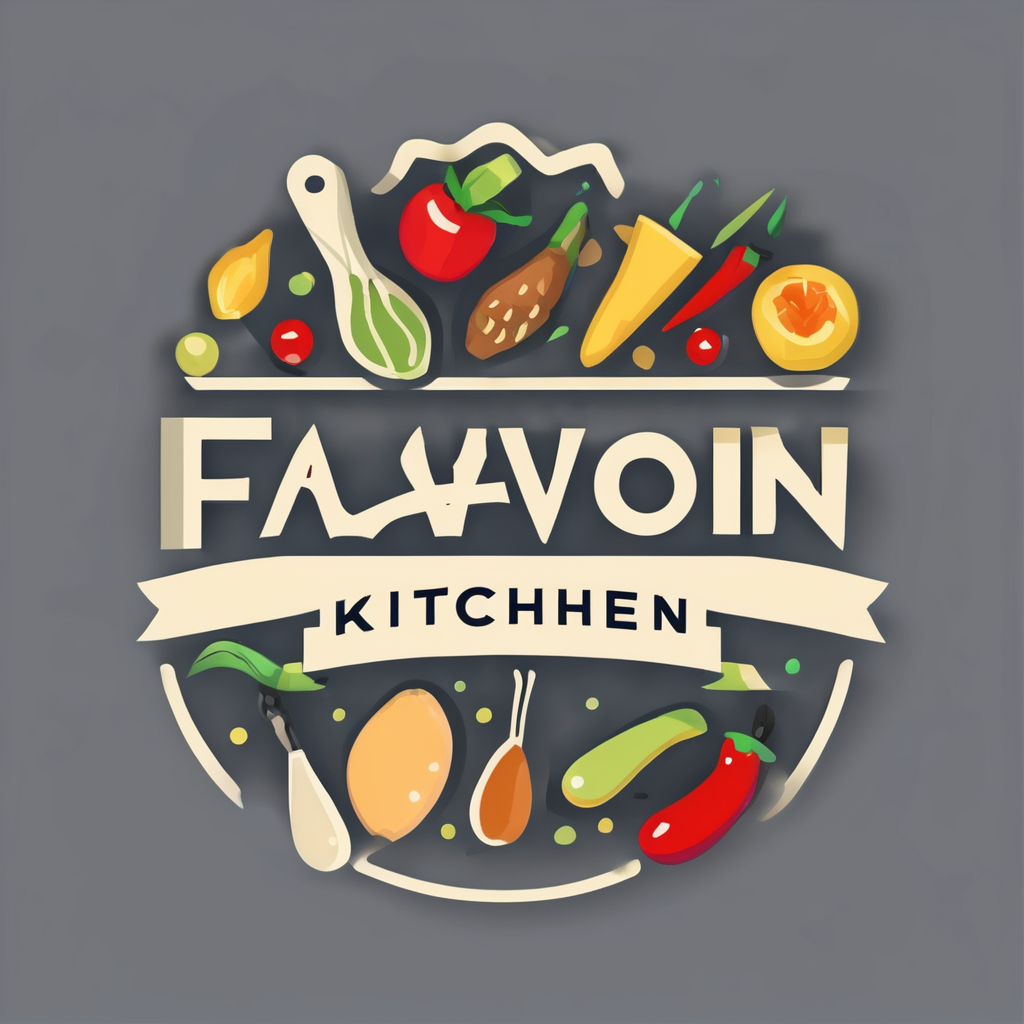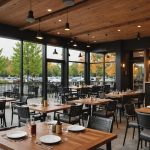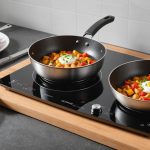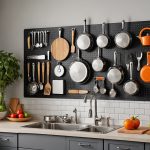Seamless Culinary Harmony: Innovative Strategies to Blend Your Indoor and Outdoor Cooking Areas
When it comes to creating a seamless culinary experience, blending your indoor and outdoor cooking areas can be a game-changer. This approach not only expands your cooking space but also enhances the overall dining experience, making it more enjoyable and versatile. Here’s how you can achieve this perfect harmony between your indoor and outdoor kitchens.
Designing for Harmony: Key Principles
To create a cohesive look and feel between your indoor and outdoor kitchens, you need to consider several key design principles.
Also to discover : Elevate your kitchen: chic and pet-friendly design ideas for stylish living with your furry companions
Indoor Kitchen Design
Your indoor kitchen is the heart of your home, and its design sets the tone for the entire space. Here are some tips to ensure it complements your outdoor area:
- Open Plan Layout: An open plan layout allows for a smooth transition between your kitchen, living room, and outdoor spaces. This design encourages social interaction and makes the space feel more expansive[2].
- Natural Light: Incorporate large windows and sliding doors to bring in natural light. This not only illuminates your indoor space but also creates a visual connection to the outdoors.
- Materials and Colors: Choose materials and colors that are consistent with your outdoor design. For example, using stainless steel appliances indoors can match the weather-resistant stainless steel furniture outdoors.
Outdoor Kitchen Design
Your outdoor kitchen should be an extension of your indoor space, both in terms of functionality and aesthetics.
Also to read : Revamp your kitchen: clever techniques for effortless food waste reduction
- Weather Resistant Materials: Use materials like stainless steel, granite, and hardwood that can withstand various weather conditions. These materials are not only durable but also add a touch of sophistication to your outdoor space.
- Functional Layout: Ensure your outdoor kitchen has a functional layout that includes essential elements like a grill, countertops, and storage. This will make cooking outdoors as convenient as cooking indoors.
- Lighting: Proper lighting is crucial for an outdoor kitchen. Consider installing LED lights or lanterns to create a warm and inviting ambiance in the evening.
Creating a Seamless Transition
A seamless transition between your indoor and outdoor kitchens is essential for creating a cohesive living space.
Doors and Windows
The type of doors and windows you choose can significantly impact the transition between your indoor and outdoor spaces.
- Sliding Doors: Sliding doors are ideal for creating an open plan layout that connects your indoor and outdoor spaces. They allow for easy movement and provide an unobstructed view of the outdoors.
- Bi-Fold Doors: Bi-fold doors are another excellent option. They can be fully opened to merge your indoor and outdoor spaces, creating a single, expansive living area.
Flooring and Surfaces
Consistent flooring and surfaces can help create a visual flow between your indoor and outdoor spaces.
- Matching Materials: Use the same or similar materials for your indoor and outdoor flooring. For example, if you have hardwood floors indoors, consider using hardwood or composite decking outdoors.
- Continuous Surfaces: Extend your indoor countertops to the outdoors to create a continuous surface. This can be achieved with materials like granite or quartz.
Practical Tips for Blending Spaces
Here are some practical tips to help you blend your indoor and outdoor kitchens seamlessly:
Use Natural Elements
Incorporate natural elements to create a harmonious transition between your indoor and outdoor spaces.
- Plants and Greenery: Adding plants and greenery both indoors and outdoors can create a natural bridge between the two spaces.
- Water Features: A small water feature, like a fountain, can add a soothing element to both your indoor and outdoor spaces.
Consider the Flow
Ensure the flow between your indoor and outdoor spaces is smooth and logical.
- Traffic Path: Plan the traffic path to ensure it flows naturally from your indoor kitchen to your outdoor space.
- Seating Areas: Create inviting seating areas both indoors and outdoors to encourage social interaction and relaxation.
Case Studies: Real-Life Examples
Let’s look at some real-life examples that illustrate how to blend indoor and outdoor kitchens effectively.
Le Kraken Restaurant
The Le Kraken restaurant in Le Bono, France, is a perfect example of how to create harmony between indoor and outdoor spaces. This restaurant features an inviting indoor space that seamlessly transitions to a verdant outdoor terrace. The use of natural materials and consistent design elements ensures a cohesive look and feel between the two areas[3].
Detailed Strategies for a Cohesive Look
Here are some detailed strategies to help you achieve a cohesive look between your indoor and outdoor kitchens:
Materials Comparison
| Material | Indoor Use | Outdoor Use | Benefits |
|---|---|---|---|
| Stainless Steel | Appliances, countertops | Furniture, grills | Durable, weather-resistant, easy to clean |
| Granite | Countertops | Countertops, outdoor tables | Durable, heat-resistant, aesthetically pleasing |
| Hardwood | Flooring, cabinets | Decking, furniture | Natural look, durable, can be stained to match indoor decor |
| LED Lights | Under-cabinet lighting | Outdoor lighting | Energy-efficient, long-lasting, versatile |
Design Elements to Consider
- Color Scheme: Use a consistent color scheme both indoors and outdoors to create a cohesive look. Choose colors that complement the natural surroundings of your outdoor space.
- Furniture Style: Select furniture that has a similar style and material both indoors and outdoors. For example, if you have modern furniture indoors, opt for modern outdoor furniture as well.
- Lighting: Ensure your lighting is consistent in style and functionality. Use similar types of lighting fixtures both indoors and outdoors to create a seamless transition.
Quotes from Experts
Here are some insights from design experts on blending indoor and outdoor kitchens:
- “The key to blending indoor and outdoor spaces is to create a visual flow. Use consistent materials, colors, and design elements to ensure the spaces feel connected.” – Sarah Jones, Interior Designer
- “Outdoor kitchens should be an extension of your indoor space, not a separate entity. Choose materials and designs that complement your indoor kitchen to create a seamless transition.” – Mark Davis, Landscape Architect
Blending your indoor and outdoor kitchens is about more than just physical space; it’s about creating a cohesive living environment that enhances your culinary and social experiences. By considering design principles, using consistent materials, and ensuring a smooth transition, you can create a seamless culinary harmony that makes your home feel more expansive and inviting.
Whether you’re looking to renovate your existing space or build a new home, incorporating these strategies will help you create an indoor-outdoor kitchen setup that is both functional and aesthetically pleasing. So, go ahead and merge your indoor and outdoor spaces – your home, and your taste buds, will thank you.
Understanding the Benefits of Blending Indoor and Outdoor Cooking Spaces
Integrating seamless indoor and outdoor cooking spaces can significantly enhance your culinary experiences. This design choice maximises space efficiency, allowing you to make the most of your available area without the feeling of being cramped. By doing so, it provides a comfortable flow between the kitchen and outdoor areas, fostering an immersive cooking environment.
The versatility offered by combining indoor and outdoor cooking spaces caters to various occasions. Whether you’re hosting a small family barbecue or a large holiday gathering, having both areas available ensures you can accommodate the needs of your guests with ease. This adaptability enhances your hosting capabilities, adding a new dimension to your home entertaining.
A significant benefit of this seamless integration is the potential increase in home value and appeal. Homes that feature innovative and modern design elements, such as unified cooking spaces, appeal to potential buyers, offering them a glimpse of elevated lifestyle possibilities. This not only improves the visual aesthetic of your home but also adds functional value, making it a sought-after feature in the real estate market.
By embracing these opportunities, you can transform your home into a dynamic living space that supports both everyday activities and special gatherings alike.
Innovative Design Ideas for Seamless Integration
Innovative design strategies for indoor-outdoor cooking spaces are transforming how we approach living areas. A key feature of these designs is the open concept layout, which offers numerous advantages. Open spaces not only facilitate better flow for cooking and entertaining but also maintain essential sightlines between indoor and outdoor areas. Establishing visual continuity through consistent flooring and coherent décor further enhances the feel of an integrated space.
Open Concept Layouts
Open concepts signify more than just spaciousness; they promote interaction and connectivity. Such designs allow hosts to engage with guests while preparing meals without barriers. Visual continuity is pivotal—using matching materials like similar flooring indoors and outdoors seamlessly links the two environments.
Functional Outdoor Kitchens
A functional outdoor kitchen needs essential appliances like grills and refrigerators, crafted from materials that resist environmental factors. To enrich the culinary space, incorporate seating and preparation areas. Comfort and functionality should work hand-in-hand, ensuring that every element endures diverse weather conditions while remaining aesthetically pleasing.
Incorporating Natural Elements
Natural elements bridge the gap between indoor and outdoor spaces. Incorporate plants and smart landscaping to foster unity. Lighting also plays a vital role, not just for visibility but for enhancing ambiance, ensuring a harmonious blend between the environments remains intact even after dusk.
Practical Tips for Blending Indoor and Outdoor Cooking Areas
To truly achieve a seamless indoor-outdoor cooking experience, start by incorporating multifunctional furniture and appliances. Opt for items that serve dual purposes, like a table with a built-in cooler or a grill with side burners that can also function as a stove. This approach not only saves space but also enhances practicality.
Proper ventilation and climate control are essential. Ensure that your cooking space has adequate ventilation to handle smoke and odours, especially if you’re transitioning your cooking from indoors to the patio. Consider installing retractable awnings or pergolas to provide shade and shelter, helping regulate temperature and protect equipment.
Designate specific zones for cooking, dining, and relaxing. Clearly defined areas will make your space more functional and user-friendly. For instance, place the grill in an area that’s near the kitchen for easy access to ingredients and utensils while keeping the dining area slightly apart to avoid smoke.
When planning your space, use these seamless indoor outdoor cooking tips to ensure your design is both efficient and enjoyable. By focusing on functionality and practicality, you can create a cooking area that enhances both everyday meals and social gatherings.
Visual Inspiration and Successful Examples
The seamless integration of indoor and outdoor cooking spaces offers unique and inspiring possibilities. By blending environments, homeowners can maximize their living spaces, enhancing functionality and aesthetics. This fusion is evident in various high-profile homes that skillfully unite indoor and outdoor elements.
Case Studies of Successful Blends
Several high-profile homes exemplify the success of indoor-outdoor cooking integration. These properties often feature open layouts and versatile design elements, creating a harmonious flow between spaces. Through visual storytelling, these homes illustrate the potential of such designs. Photos reveal innovative layouts, demonstrating how well-planned designs can lead to functional and beautiful living areas.
User-Generated Content and Community Inspiration
Online communities are a treasure trove of ideas for indoor-outdoor integration. Homeowners and designers share personal stories and photographs, fostering a space for creativity and innovation. Engaging with these communities can provide invaluable insights into real-world applications and inspire new approaches to integration. The collective wisdom gathered through crowd-sourced content encourages experimentation and personalization, helping individuals tailor their spaces to meet specific needs.
By exploring these examples and engaging with online communities, homeowners can draw inspiration for their indoor-outdoor cooking spaces, ensuring they are both practical and aesthetically pleasing.
Recommendations for Appliances and Equipment
Creating a functional outdoor kitchen involves selecting the right outdoor cooking appliances that not only meet culinary needs but also enhance your overall cooking experience. A well-equipped outdoor kitchen typically includes essential appliances such as a high-quality barbecue grill, a compact refrigerator, and a set of durable cookware. These elements serve as the backbone of enjoyable and efficient outdoor cooking adventures.
When choosing appliances, consider energy-efficient choices that match your indoor kitchen’s energy savings. For instance, propane grills often offer quicker cooking times and consume less energy compared to electric grills, thereby aligning with energy-saving goals. Additionally, dual-fuel options can seamlessly integrate outdoor and indoor cooking activities, presenting practical choices for versatile home chefs.
Incorporating innovative gadgets can further elevate your outdoor and indoor culinary endeavors. For example, Bluetooth meat thermometers allow you to precisely monitor cooking temperatures from a distance, resulting in perfectly cooked meals both in the outdoor and indoor settings. Wireless temperature control systems can also streamline your cooking process, providing greater freedom and flexibility.
The integration of functional outdoor cooking appliances with energy-efficient features and innovative technology ensures a seamless culinary journey, both indoors and outdoors. Embracing these recommendations ensures your outdoor kitchen is a delightful extension of your home’s cooking environment.











